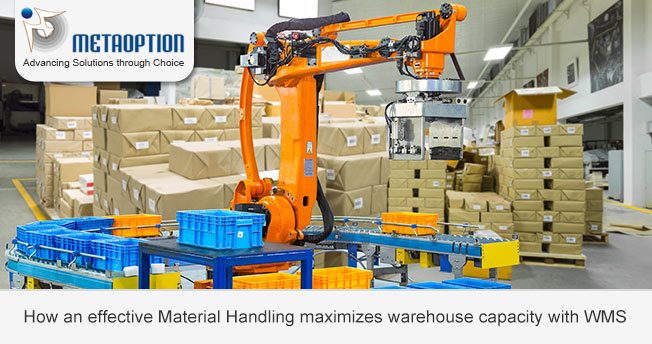If you want to focus on one concept to increase warehouse productivity, boost worker morale, and protect workers all in one go, consider material handling with the warehouse management system. Whereas, Material Handling is known as moving goods safely, and securely, and controlling the goods and items throughout the manufacturing, warehousing, distribution, consumption, and disposal process. This whole process includes a variety of manual, semi-automated, and automated equipment and systems, also known as handlers. Also, it allows the supply chain to work efficiently and effectively.

Material handling can improve:
- Material forecasting
- Resource distribution
- Inventory management
- Customer delivery
- Customer service and support
- Production planning
- Flow and process management
Implementing an Advanced Warehouse Management System
The warehouse management system maintains visibility over your entire warehouse process. It offers countless benefits, with regard to material handling. Microsoft has brought in the Material Handling Equipment Interface that connects external physical material handling (MH) systems to a warehouse managed by an advanced warehouse management system for Microsoft Dynamics 365 Business Central.
The interface between the WMS and MH systems consists of two queues: one for outbound events (WMS to MH) and one for inbound events (MH to WMS). The WMS system generates outbound events based on work lines that are created during various work creation and execution processes. The MH system then regularly polls the WMS system for new events and processes the responses. After the MH system has finished handling the events in accordance with work instructions, it sends inbound events, such as work line completion and short picking.
Following are the various elements and the order that processes occur when you use Material Handling Equipment Interface integration:
- During work creation or work execution, outbound events are created in the outbound queue.
- The MH equipment connects to the MH equipment service, polls for any new events that are relevant to it, and processes those events.
- When the MH equipment is ready to report back, it connects to the service again and submits inbound events. Those events are immediately processed by the queue processor.
- Based on the inbound event data, the queue processor might run existing work, modify it, or create new work.
For more information and a tailored demonstration contact us today at MetaOption.


